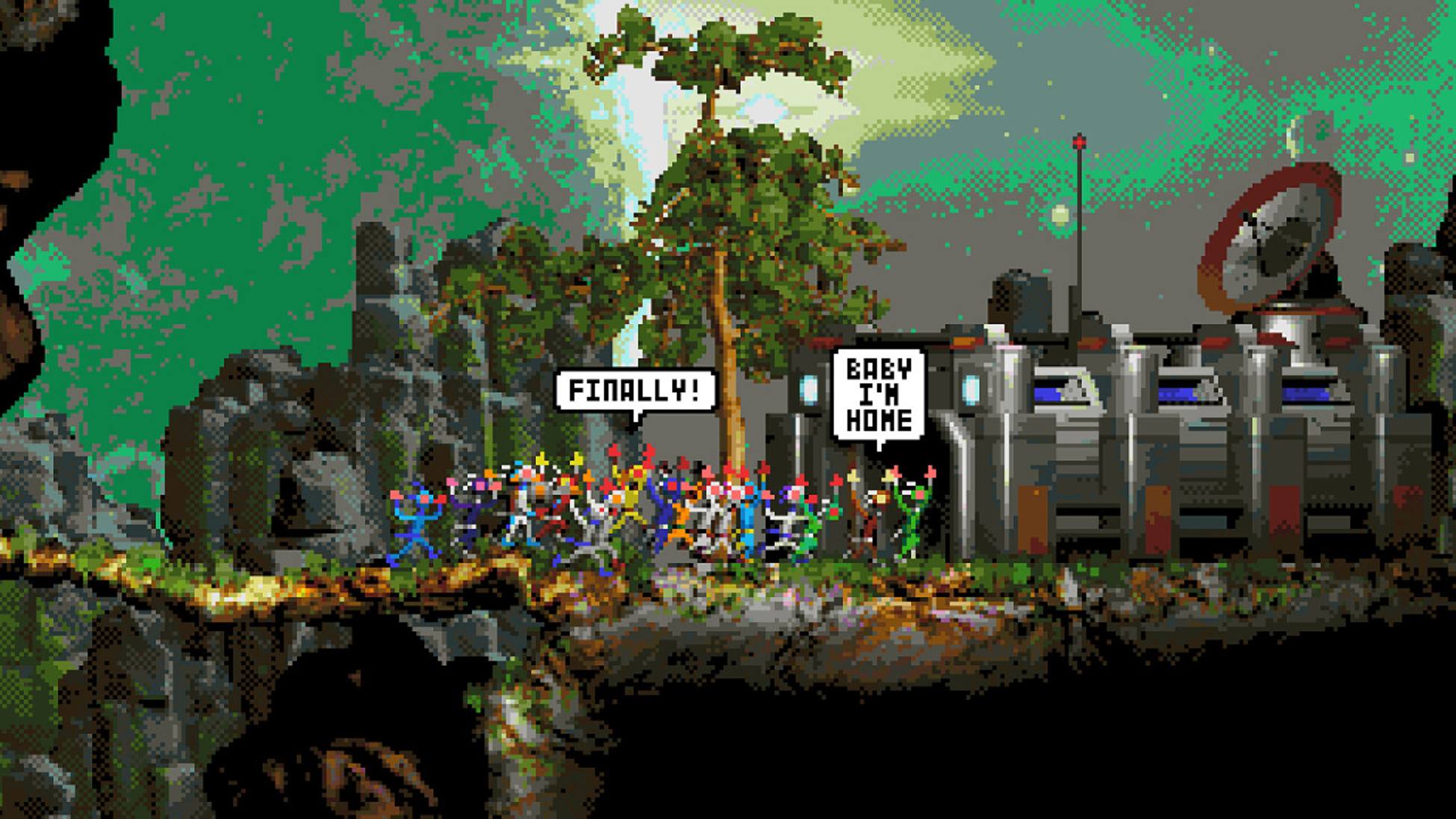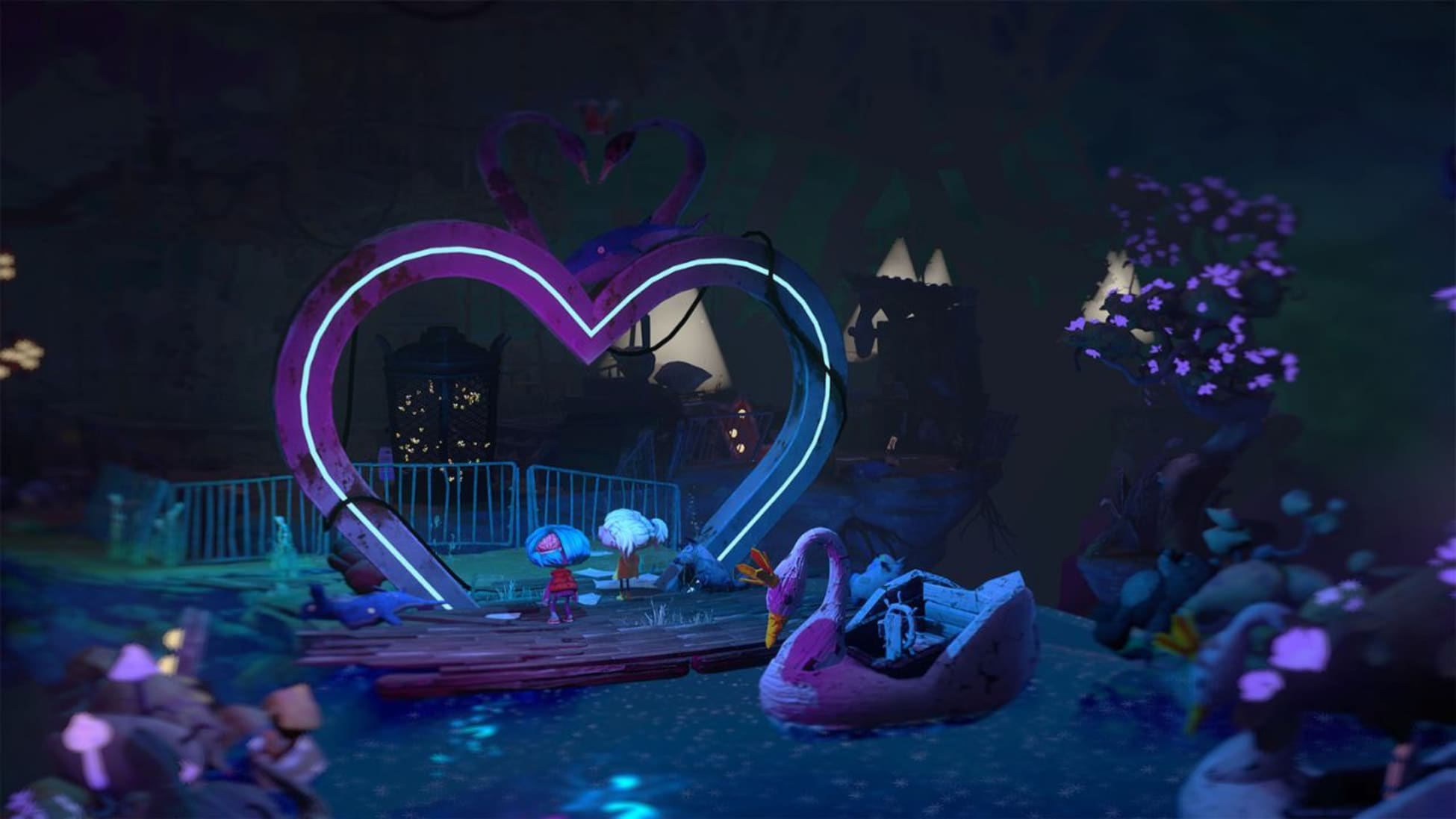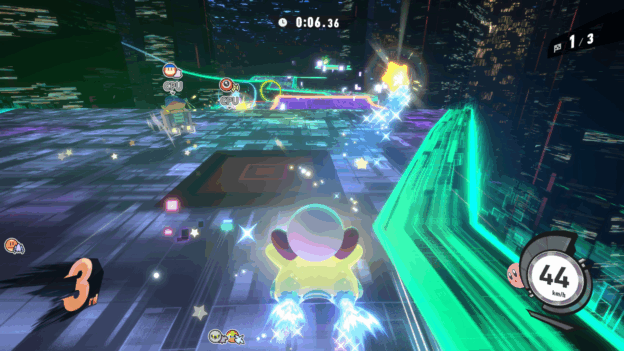Review: Moons of Darsalon (Nintendo Switch)

Moons of Darsalon is one of those rare platformers that instantly captivated me. Whether they be more about puzzle solving, adventuring, or arcade action, platformers tend to involve a slow build into what they’re about. Moons of Darsalon starts with its foot on the gas and doesn’t let up.
The premise is that teams of darsanauts (thus named because they’re exploring the moons of the planet Darsalon, one assumes; as if we would have moonstranauts or marstranauts) have become lost in their missions. As is the way, you’re a lone Buck Rogers-esque pilot sent out to rescue them all. This involves landing in harsh environments, locating all of the missing darsanauts, and leading them to the safety of their bunkers.
The problem is that the darsanauts are quite stupid. They can’t find the best route from point A to point B without explicit instructions. They don’t recognize danger. They’re afraid of the dark and won’t move when the lights go out. As such, you’ll need to lead with explicit instructions, keeping them safe all the while.
At first, this isn’t too hard. Darsanauts are easy to find as you explore a moon’s surface, and they’ll generally tag along behind you until something (darkness, a chasm, your commands) makes them stop. When that happens, you’ll need to figure out how to let them progress. If it’s darkness, shine your flashlight. If it’s a chasm, push a box or rock for them to jump down to. If it’s your command, that’s likely because you made them stop at a specific point to trigger an environmental puzzle mechanism or to keep them out of harm’s way while you blast an enemy.
Commands are easily assigned via the D-pad to every darsanaut in range: follow, stay, move left, move right. The problem (which is necessary, of course, in order to have a game) is that they’ll keep following that command even when common sense says otherwise. Welcome to our AI future, kids.
So, while you’re attempting to destroy the enemies, open paths, and solve the puzzles that lie before you, any number of darsanauts behind you need constant babysitting in order to stay alive. The gameplay is hectic, it’s nerve-wracking, and it’s tons of fun.
It’s also quite hard, depending upon your goals. I was able to almost always push through a level on the first try, even late in the game. Doing so while completing the bonus objectives is another story. Keeping all of the darsanauts alive? Difficult. Taking absolutely no damage? Even harder. Completing the level within the designated time limit? Well nigh impossible. And when you start to unlock jetpacks and moonbuggies, things go completely off the rails.
Thankfully, unless you or all of the darsanauts die, you’re not punished for any of your failings. So, you’re free to take all the time you want to figure things out or just drive/fly around these bonkers moons.
And yes, they are bonkers. The level designs in Moons of Darsalon are visually captivating and conceptually clever, making each a wonder to explore even if the action doesn’t really give you a chance to absorb it all. The graphics are retro, sure, but they’re also quite dense and lively, and can be altered to achieve the antiquated display of your choosing.
This denseness does, unfortunately, create a platforming problem. Ledges and walls are often hard to discern, making timed jumps and grabs difficult to pull off. The controls are also a bit slow and unwieldy (seemingly purposefully based on the game’s meta jokes about development decisions). For the most part, this isn’t a problem. But when you’re wrestling with enemies, darsanauts, and confined environments at one time, you don’t want to also be wrestling with your Joy-Con.
Also the dense but pixelated graphics often making it hard to discern the gameplay objects from the background when playing in handheld mode. Level completion is a lot easier on the big screen of your TV.
But those are my only complaints. Everything else in Moons of Darsalon works to near perfection. It’s consistently fun and constantly funny. The retro approach is perfectly executed both visually and aurally. And have I mentioned the music yet? The eShop will tell you it’s “based on MOS 6581 (SID) chip from 1982.” I have no idea what that is, but that won’t stop me from arguing, “You haven’t heard Ravel’s Bolero until you’ve heard it based on MOS 6581 (SID) chip from 1982,” at the next Cleveland Orchestra fundraiser*. Also, 8-bit speech synthesis hasn’t sounded this good since the Intellivoice last told me, “That was oooooon taaaargit.”
So, yeah, I greatly enjoyed Moons of Darsalon, as would any puzzle/platform fan with a sense of humor and penchant for retro design and gameplay. It helps if you’re also a sci-fi buff, as there’s plenty in here to spark nostalgia. The game can be frustrating at times, and that will likely prevent me from ever trying to 100% the objectives. But the first time through was a blast, and it’s almost as much fun to watch others try it for the first time. Moons of Darsalon is my first great Switch game of 2025.
* Full disclosure – I have never been to a Cleveland Orchestra fundraiser.








